10 Things: CubeSats — Going Farther
10 Things: CubeSats — Going Farther
Now that the MarCOs — a pair of briefcase-sized interplanetary CubeSats — seem to have reached their limit far beyond Mars, we’re looking forward to an expanding era of small, versatile and powerful space-based science machines.
Here are ten ways we’re pushing the limits of miniaturized technology to see just how far it can take us.

1. MarCO: The Farthest (So Far)
MarCO, short for Mars Cube One, was the first interplanetary mission to use a class of mini-spacecraft called CubeSats.
The MarCOs — nicknamed EVE and WALL-E, after characters from a Pixar film — served as communications relays during InSight’s November 2018 Mars landing, beaming back data at each stage of its descent to the Martian surface in near-real time, along with InSight’s first image.
WALL-E sent back stunning images of Mars as well, while EVE performed some simple radio science.
All of this was achieved with experimental technology that cost a fraction of what most space missions do: $18.5 million provided by NASA’s Jet Propulsion Laboratory in Pasadena, California, which built the CubeSats.
WALL-E was last heard from on Dec. 29; EVE, on Jan. 4. Based on trajectory calculations, WALL-E is currently more than 1 million miles (1.6 million kilometers) past Mars; EVE is farther, almost 2 million miles (3.2 million kilometers) past Mars.

MarCO-B took these images as it approached Mars in November 2018. Credit: NASA/JPL-Caltech
2. What Are CubeSats?
CubeSats were pioneered by California Polytechnic State University in 1999 and quickly became popular tools for students seeking to learn all aspects of spacecraft design and development.
Today, they are opening up space research to public and private entities like never before. With off-the-shelf parts and a compact size that allows them to hitch a ride with other missions — they can, for example, be ejected from the International Space Station, up to six at a time — CubeSats have slashed the cost of satellite development, opening up doors to test new instruments as well as to create constellations of satellites working together.
CubeSats can be flown in swarms, capturing simultaneous, multipoint measurements with identical instruments across a large area. Sampling entire physical systems in this way would drive forward our ability to understand the space environment around us, in the same way multiple weather sensors help us understand global weather systems.
Ready to get started? Check out NASA’s CubeSats 101 Guide.

Engineer Joel Steinkraus uses sunlight to test the solar arrays on one of the Mars Cube One (MarCO) spacecraft at NASA’s Jet Propulsion Laboratory. Credit: NASA/JPL-Caltech
3. Measuring Up
The size and cost of spacecraft vary depending on the application; some are the size of a pint of ice cream while others, like the Hubble Space Telescope, are as big as a school bus.
Small spacecraft (SmallSats) generally have a mass less than 400 pounds (180 kilograms) and are about the size of a large kitchen fridge.
CubeSats are a class of nanosatellites that use a standard size and form factor. The standard CubeSat size uses a “one unit” or “1U” measuring 10x10x10 centimeters (or about 4x4x4 inches) and is extendable to larger sizes: 1.5, 2, 3, 6, and even 12U.

The Sojourner rover (seen here on Mars in 1997) is an example of small technology that pioneered bigger things. Generations of larger rovers are being built on its success.
4. A Legacy of Small Pathfinders
Not unlike a CubeSat, NASA’s first spacecraft — Explorer 1 — was a small, rudimentary machine. It launched in 1958 and made the first discovery in outer space, the Van Allen radiation belts that surround Earth. It was the birth of the U.S. space program.
In 1997, a mini-rover named Sojourner rolled onto Mars, a trial run for more advanced rovers such as NASA’s Spirit, Opportunity and Curiosity.
Innovation often begins with pathfinder technology, said Jakob Van Zyl, director of the Solar System Exploration Directorate at NASA’s Jet Propulsion Laboratory. Once engineers prove something can be done, science missions follow.

5. Testing in Space
NASA is continually developing new technologies — technologies that are smaller than ever before, components that could improve our measurements, on-board data processing systems that streamline data retrievals, or new methods for gathering observations. Each new technology is thoroughly tested in a lab, sometimes on aircraft, or even at remote sites across the world. But the space environment is different than Earth. To know how something is going to operate in space, testing in space is the best option.
Sending something unproven to orbit has traditionally been a risky endeavor, but CubeSats have helped to change that. The diminutive satellites typically take less than two years to build. CubeSats are often a secondary payload on many rocket launches, greatly reducing cost. These hitchhikers can be deployed from a rocket or sent to the International Space Station and deployed from orbit.
Because of their quick development time and easy access to space, CubeSats have become the perfect platform for demonstrating how a new technological advancement will perform in orbit.

RainCube is a mini weather satellite, no bigger than a shoebox, that will measure storms. It’s part of several new NASA experiments to track storms from space with many small satellites, instead of individual, large ones. Credit: UCAR
6. At Work in Earth Orbit
A few recent examples from our home world:
RainCube, a satellite no bigger than a suitcase, is a prototype for a possible fleet of similar CubeSats that could one day help monitor severe storms, lead to improving the accuracy of weather forecasts and track climate change over time.
IceCube tested instruments for their ability to make space-based measurements of the small, frozen crystals that make up ice clouds. Like other clouds, ice clouds affect Earth’s energy budget by either reflecting or absorbing the Sun’s energy and by affecting the emission of heat from Earth into space. Thus, ice clouds are key variables in weather and climate models.

Rocket Lab’s Electron rocket lifts off from Launch Complex 1 for the NASA ELaNa19 mission. Credit: Trevor Mahlmann/Rocket Lab
7. First Dedicated CubeSat Launch
A series of new CubeSats is now in space, conducting a variety of scientific investigations and technology demonstrations following a Dec. 17, 2018 launch from New Zealand — the first time CubeSats have launched for NASA on a rocket designed specifically for small payloads.
This mission included 10 Educational Launch of Nanosatellites (ELaNa)-19 payloads, selected by NASA’s CubeSat Launch Initiative:
CubeSat Compact Radiation Belt Explorer (CeREs) — High energy particle measurement in Earth’s radiation belt
Simulation-to-Flight 1 (STF-1) — Software condensing to support CubeSat implementations
Advanced Electrical Bus (ALBus) — Advances in solar arrays and high capacity batteries
CubeSat Handling Of Multisystem Precision Time Transfer (CHOMPTT) — Navigation plans for exo-planetary implementation
CubeSail — Deployment and control of a solar sail blade
NMTSat — Magnetic field, high altitude plasma density
Rsat — Manipulation of robotic arms
Ionospheric Scintillation Explorer (ISX) — Plasma fluctuations in the upper atmosphere
Shields-1 — Radiation shielding
DaVinci — High School to Grade School STEM education
8. The Little CubeSat That Could
CubeSat technology is still in its infancy, with mission success rates hovering near 50 percent. So, a team of scientists and engineers set out on a quest. Their goal? To build a more resilient CubeSat — one that could handle the inevitable mishaps that bedevil any spacecraft, without going kaput.
They wanted a little CubeSat that could.
They got to work in 2014 and, after three years of development, Dellingr was ready to take flight.
Read the Full Story: Dellingr: The Little CubeSat That Could

Artist’s concept of Lunar Flashlight. Credit: NASA
9. Going Farther
There are a handful of proposed NASA missions could take CubeSat technology farther:
CUVE would travel to Venus to investigate a longstanding mystery about the planet’s atmosphere using ultraviolet-sensitive instruments and a novel, carbon-nanotube light-gathering mirror.
Lunar Flashlight would use a laser to search for water ice in permanently shadowed craters on the south pole of Earth’s Moon.
Near-Earth Asteroid Scout, a SmallSat, would use a solar sail to propel it to do science on asteroids that pass close to Earth.
All three spacecraft would hitch rides to space with other missions, a key advantage of these compact science machines.

Expedition 56 Flight Engineer Serena Auñón-Chancellor installs the NanoRacks Cubesat Deployer-14 (NRCSD-14) on the Multipurpose Experiment Platform inside the Japanese Kibo laboratory module. The NRCSD-14 was then placed in the Kibo airlock and moved outside of the space station to deploy a variety of CubeSats into Earth orbit. Credit: NASA
10. And We’re Just Getting Started
Even if they’re never revived, the team considers MarCO a spectacular success.
A number of the critical spare parts for each MarCO will be used in other CubeSat missions. That includes their experimental radios, antennas and propulsion systems. Several of these systems were provided by commercial vendors, making it easier for other CubeSats to use them as well.
More small spacecraft are on the way. NASA is set to launch a variety of new CubeSats in coming years.
“There’s big potential in these small packages,” said John Baker, the MarCO program manager at JPL. “CubeSats — part of a larger group of spacecraft called SmallSats — are a new platform for space exploration affordable to more than just government agencies.”
Make sure to follow us on Tumblr for your regular dose of space: http://nasa.tumblr.com
More Posts from Ocrim1967 and Others

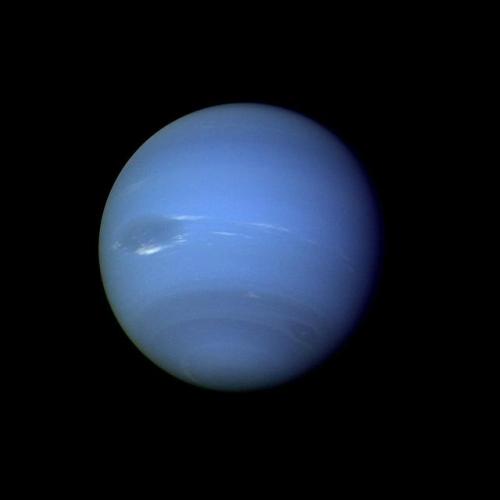
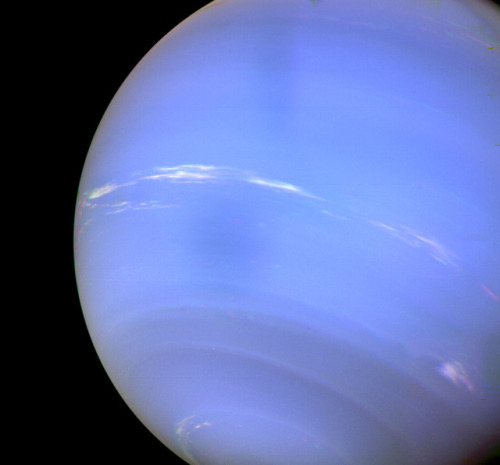
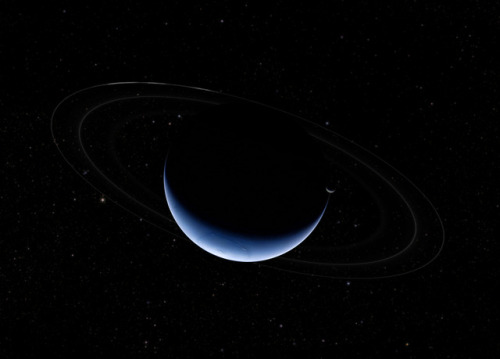
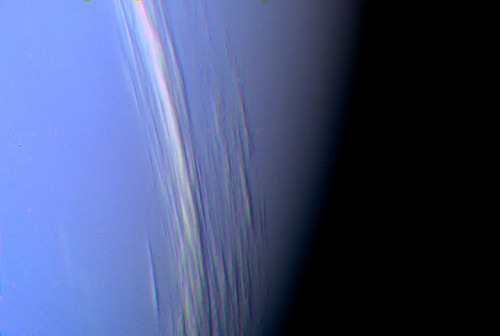
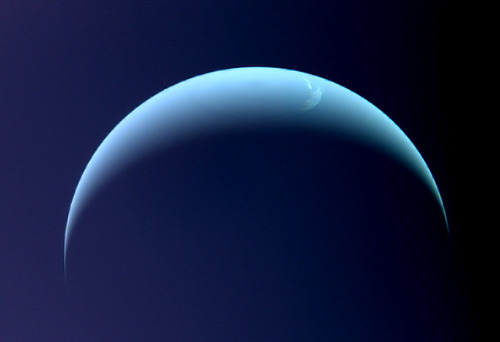
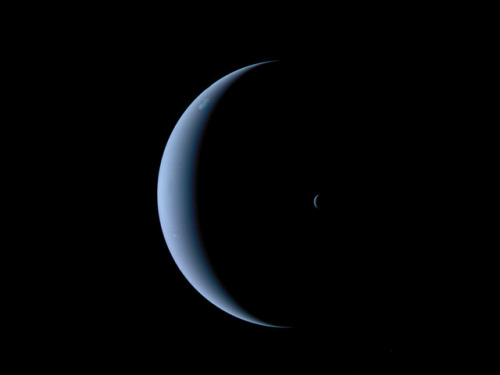
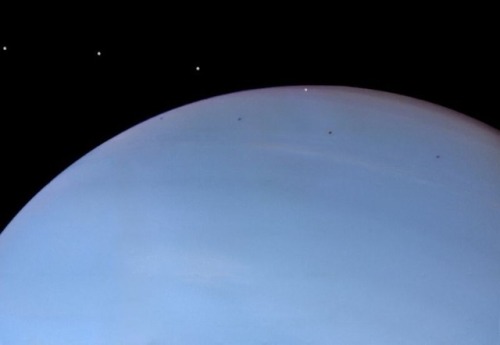
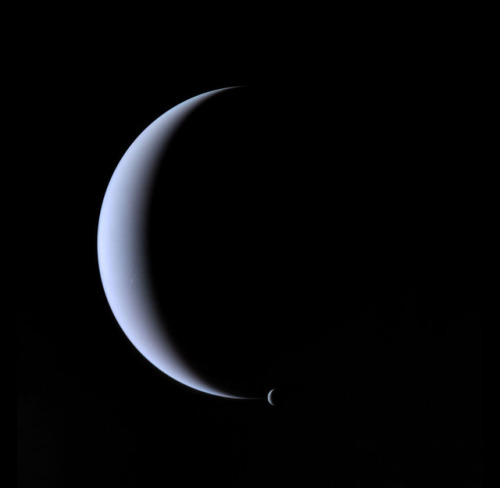
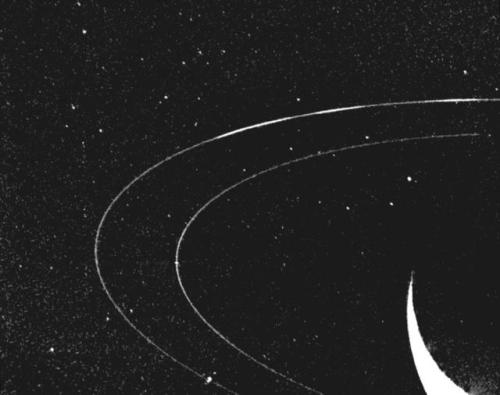
Neptune ♆
On this day in 1846 was discovered the planet Neptune.
The ice giant Neptune was the first planet located through mathematical predictions rather than through regular observations of the sky. (Galileo had recorded it as a fixed star during observations with his small telescope in 1612 and 1613.) When Uranus didn’t travel exactly as astronomers expected it to, a French mathematician, Urbain Joseph Le Verrier, proposed the position and mass of another as yet unknown planet that could cause the observed changes to Uranus’ orbit. After being ignored by French astronomers, Le Verrier sent his predictions to Johann Gottfried Galle at the Berlin Observatory, who found Neptune on his first night of searching in 1846. Seventeen days later, its largest moon, Triton, was also discovered.
Neptune is invisible to the naked eye because of its extreme distance from Earth. Interestingly, the highly eccentric orbit of the dwarf planet Pluto brings Pluto inside Neptune’s orbit for a 20-year period out of every 248 Earth years. Pluto can never crash into Neptune, though, because for every three laps Neptune takes around the Sun, Pluto makes two. This repeating pattern prevents close approaches of the two bodies.
Nearly 4.5 billion kilometers (2.8 billion miles) from the Sun, Neptune orbits the Sun once every 165 years.
Uranus’ blue-green color is also the result of atmospheric methane, but Neptune is a more vivid, brighter blue, so there must be an unknown component that causes the more intense color.
Despite its great distance and low energy input from the Sun, Neptune’s winds can be three times stronger than Jupiter’s and nine times stronger than Earth’s.
Winds on Neptune travel faster than the speed of sound.
In 1989, Voyager 2 tracked a large, oval-shaped, dark storm in Neptune’s southern hemisphere. This “Great Dark Spot” was large enough to contain the entire Earth.
Neptune has five known rings. Voyager 2’s observations confirmed that these unusual rings are not uniform but have four thick regions (clumps of dust) called arcs. The rings are thought to be relatively young and short-lived.
Neptune has 14 known moons, six of which were discovered by Voyager 2.
Triton, Neptune’s largest moon, orbits the planet in the opposite direction compared with the rest of the moons, suggesting that it may have been captured by Neptune in the distant past.
To know more about the planet Neptune click here and here.
Images credit: NASA/JPL- Caltech (some images processed by Kevin M. Gill)



Blanet: A new class of planet that could form around black holes
The dust clouds around supermassive black holes are the perfect breeding ground for an exotic new type of planet.
Blanets are fundamentally similar to planets; they have enough mass to be rounded by their own gravity, but are not massive enough to start thermonuclear fusion, just like planets that orbit stars. In 2019, a team of astronomers and exoplanetologists showed that there is a safe zone around a supermassive black hole that could harbor thousands of blanets in orbit around it.
The generally agreed theory of planet formation is that it occurs in the protoplanetary disk of gas and dust around young stars. When dust particles collide, they stick together to form larger clumps that sweep up more dust as they orbit the star. Eventually, these clumps grow large enough to become planets.
A similar process should occur around supermassive black holes. These are surrounded by huge clouds of dust and gas that bear some similarities to the protoplanetary disks around young stars. As the cloud orbits the black hole, dust particles should collide and stick together forming larger clumps that eventually become blanets.
The scale of this process is vast compared to conventional planet formation. Supermassive black holes are huge, at least a hundred thousand times the mass of our Sun. But ice particles can only form where it is cool enough for volatile compounds to condense.
This turns out to be around 100 trillion kilometers from the black hole itself, in an orbit that takes about a million years to complete. Birthdays on blanets would be few and far between!
An important limitation is the relative velocity of the dust particles in the cloud. Slow moving particles can collide and stick together, but fast-moving ones would constantly break apart in high-speed collisions. Wada and co calculated that this critical velocity must be less than about 80 meters per second.
source
10 Things: How to Photograph a Meteor Shower
Taking photographs of a meteor shower can be an exercise in patience as meteors streak across the sky quickly and unannounced, but with these tips – and some good fortune – you might be rewarded with a great photo.
These tips are meant for a DSLR or mirrorless camera, but some point-and-shoot cameras with manual controls could be used as well.
1. The Photo Op: Perseids Meteors
The Perseids are dusty remnants of comet 109P/Swift-Tuttle.
Earth passes through the comet’s invisible, multi-billion mile trail of tiny debris each year around August, creating a meteor shower of so-called “shooting stars” as the particles are vaporized in our atmosphere.
Perseid meteors already are streaking across the sky. This year’s shower peaks on a moonless summer night -from 4 pm on the 12th until 4 am on the 13th Eastern Daylight Time.
Read more on the Perseids ›
2. Get away from city lights and find a place with dark skies.

In this 30 second exposure, a meteor streaks across the sky in Spruce Knob, West Virginia, during the 2016 Perseids meteor shower. Credit: NASA/Bill Ingalls
Too much light and it will be hard for your eyes to see fainter meteors, plus your image will get flooded with the glow of light. Turning down the brightness of the camera’s LCD screen will help keep your eyes adjusted to the dark. The peak of the 2018 Perseid meteor shower occurs just after the new moon, meaning a thin crescent will set long before the best viewing hours, leaving hopeful sky watchers with a moonlight-free sky!
3. Use a tripod.

In this ten-second exposure, a meteor streaks across the sky above Washington, DC during the 2015 Perseids meteor shower, Credit: NASA/Joel Kowsky
Meteor photography requires long exposures, and even the steadiest of hands can’t hold a camera still enough for a clear shot. Heavier tripods help reduce shaking caused by wind and footsteps, but even a lightweight tripod will do. You can always place sandbags against the feet of the tripod to add weight and stability. If you don’t have a tripod, you might be able to prop your camera on or up against something around you, but be sure to secure your camera.
4. Use a wide-angle lens.

In this 30 second exposure taken with a circular fish-eye lens, a meteor streaks across the sky during the 2016 Perseids meteor shower as a photographer wipes moisture from the camera lens Friday, August 12, 2016 in Spruce Knob, West Virginia. Credit: NASA/Bill Ingalls
A wide-angle lens will capture more of the sky and give you a greater chance of capturing a meteor in your shot, while a zoom lens captures a smaller area of the sky. The odds of a meteor streaking past that small patch are lower.
5. Use a shutter release cable or the camera’s built-in timer.

Long exposures are not just for meteors. In this shot taken at Joshua Tree National Park, a hiker’s headlamp leaves a trail of light along a twilight path. Credit: National Park Service / Hannah Schwalbe
A tripod does a great job of reducing most of the shaking your camera experiences, but even the act of pressing the shutter button can blur your extended exposure. Using the self-timer gives you several seconds for any shaking from pressing the shutter button to stop before the shutter is released. A shutter release cable (without a self-timer) eliminates the need to touch the camera at all. And if your camera has wifi capabilities, you might be able to activate the shutter from a mobile device.
6. Manually focus your lens.

In this 30 second exposure, a meteor streaks across the sky during the annual Perseids meteor shower Friday, August 12, 2016 in Spruce Knob, West Virginia. Credit: NASA/Bill Ingalls
At night, autofocus will struggle to find something on which to focus. Setting your focus to infinity will get you close, but chances are you’ll have to take some test images and do some fine tuning. With your camera on a tripod, take a test image lasting a few seconds, then use the camera’s screen to review the image. Zoom in to a star to see how sharp your focus is. If the stars look like fuzzy blobs, make tiny adjustments to the focus and take another test image.
Repeat until you are happy with the result.
If your camera has a zoomable electronic viewfinder or live view option, you might be able to zoom to a star and focus without having to take a test image.
7. Aim your camera.

The Perseids appear to radiate from the constellation Perseus, visible in the northern sky soon after sunset this time of year.
Even though we don’t know when or where a single meteor will appear, we do know the general area from which they’ll originate.
Meteor showers get their name based on the point in the sky from which they appear to radiate. In the case of the Perseids, during their peak, they appear to come from the direction of the constellation Perseus in the northern sky.
8. Calculate your exposure time.

In this 20-second exposure, a meteor lights up the sky over the top of a mountain ridge near Park City, Utah. Even though this image was captured during the annual Perseid meteor shower, this “shooting star” is probably not one of the Perseid meteors, which originate from material left behind by Comet Swift-Tuttle. Instead, it’s likely one of the many bits of rock and dust that randomly fall into the atmosphere on any given night. Credit: NASA/Bill Dunford
As Earth rotates, the stars in the sky appear to move, and if your shutter is open long enough, you might capture some of that movement. If you want to avoid apparent star movement, you can follow the 500 Rule. Take 500 and divide it by the length in millimeters of your lens. The resulting number is the length of time in seconds that you can keep your shutter open before seeing star trails. For example, if you’re using a 20 mm lens, 25 seconds (500 divided by 20) is the longest you can set your exposure time before star trails start to show up in your images.
9. Experiment!

In this 30 second exposure photo, hikers find their way to the top of Spruce Knob in West Virginia to view the annual Perseids meteor shower, Friday, August 12, 2016. Credit: NASA/Bill Ingalls
Once you know the maximum exposure time, you can set your shutter priority to that length and let the camera calculate other settings for your first image. Depending on how the image turns out, you can manually adjust aperture (set it to a lower number if the image is too dark) and ISO (set it to a higher number if the image is too dark) to improve your next images. Changing only one setting at a time will give you a better understanding of how those changes affect your image.
10. Enjoy the show.

The crew of the International Space Station captured this Perseid meteor falling to Earth over China in 2011. Credit: NASA
With your camera settings adjusted, capturing that perfect photo is just a matter of time and luck. The highest rate of meteors visible per hour is in the hours after midnight and before dawn. Set up your camera next to a lounge chair or a blanket to witness the wonder of a meteor shower for yourself – and, with any luck, you’ll take home some envy-inducing shots, too!
Make sure to follow us on Tumblr for your regular dose of space: http://nasa.tumblr.com.
Sixty Years of Exploration, Innovation, and Discovery!

Exactly sixty years ago today, we opened our doors for the first time. And since then, we have opened up a universe of discovery and innovation.
There are so many achievements to celebrate from the past six decades, there’s no way we can go through all of them. If you want to dive deeper into our history of exploration, check out NASA: 60 Years and Counting.
In the meantime, take a moonwalk down memory lane with us while we remember a few of our most important accomplishments from the past sixty years!

In 1958, President Eisenhower signed the National Aeronautics and Space Act, which effectively created our agency. We officially opened for business on October 1.
To learn more about the start of our space program, watch our video: How It All Began.

Alongside the U.S. Air Force, we implemented the X-15 hypersonic aircraft during the 1950s and 1960s to improve aircraft and spacecraft.
The X-15 is capable of speeds exceeding Mach 6 (4,500 mph) at altitudes of 67 miles, reaching the very edge of space.
Dubbed the “finest and most productive research aircraft ever seen,” the X-15 was officially retired on October 24, 1968. The information collected by the X-15 contributed to the development of the Mercury, Gemini, Apollo, and Space Shuttle programs.
To learn more about how we have revolutionized aeronautics, watch our Leading Edge of Flight video.

On July 20, 1969, Neil Armstrong and Buzz Aldrin became the first humans to walk on the moon. The crew of Apollo 11 had the distinction of completing the first return of soil and rock samples from beyond Earth.
Astronaut Gene Cernan, during Apollo 17, was the last person to have walked on the surface of the moon. (For now!)
The Lunar Roving Vehicle was a battery-powered rover that the astronauts used during the last three Apollo missions.
To learn more about other types of technology that we have either invented or improved, watch our video: Trailblazing Technology.

Our long-term Earth-observing satellite program began on July 23, 1972 with the launch of Landsat 1, the first in a long series (Landsat 9 is expected to launch in 2020!) We work directly with the U.S. Geological Survey to use Landsat to monitor and manage resources such as food, water, and forests.
Landsat data is one of many tools that help us observe in immense detail how our planet is changing. From algae blooms to melting glaciers to hurricane flooding, Landsat is there to help us understand our own planet better.
Off the Earth, for the Earth.
To learn more about how we contribute to the Earth sciences, watch our video: Home, Sweet Home.

Space Transportation System-1, or STS-1, was the first orbital spaceflight of our Space Shuttle program.
The first orbiter, Columbia, launched on April 12, 1981. Over the next thirty years, Challenger, Discovery, Atlantis, and Endeavour would be added to the space shuttle fleet.
Together, they flew 135 missions and carried 355 people into space using the first reusable spacecraft.

On January 16, 1978, we selected a class of 35 new astronauts–including the first women and African-American astronauts.
And on June 18, 1983, Sally Ride became the first American woman to enter space on board Challenger for STS-7.
To learn more about our astronauts, then and now, watch our Humans in Space video.

Everybody loves Hubble! The Hubble Space Telescope was launched into orbit on April 24, 1990, and has been blowing our minds ever since.
Hubble has not only captured stunning views of our distant stars and galaxies, but has also been there for once-in-a-lifetime cosmic events. For example, on January 6, 2010, Hubble captured what appeared to be a head-on collision between two asteroids–something no one has ever seen before.
In this image, Hubble captures the Carina Nebula illuminating a three-light-year tall pillar of gas and dust.
To learn more about how we have contributed to our understanding of the solar system and beyond, watch our video: What’s Out There?

Cooperation to build the International Space Station began in 1993 between the United States, Russia, Japan, and Canada.
The dream was fully realized on November 2, 2000, when Expedition 1 crew members boarded the station, signifying humanity’s permanent presence in space!
Although the orbiting lab was only a couple of modules then, it has grown tremendously since then!
To learn more about what’s happening on the orbiting outpost today, visit the Space Station page.

We have satellites in the sky, humans in orbit, and rovers on Mars. Very soon, we will be returning humankind to the Moon, and using it as a platform to travel to Mars and beyond.
And most importantly, we bring the universe to you.
What are your favorite NASA moments? We were only able to share a few of ours here, but if you want to learn about more important NASA milestones, check out 60 Moments in NASA History or our video, 60 Years in 60 Seconds.
Make sure to follow us on Tumblr for your regular dose of space: http://nasa.tumblr.com.
What is a Wormhole?
Wormholes were first theorized in 1916, though that wasn’t what they were called at the time. While reviewing another physicist’s solution to the equations in Albert Einstein’s theory of general relativity, Austrian physicist Ludwig Flamm realized another solution was possible. He described a “white hole,” a theoretical time reversal of a black hole. Entrances to both black and white holes could be connected by a space-time conduit.

In 1935, Einstein and physicist Nathan Rosen used the theory of general relativity to elaborate on the idea, proposing the existence of “bridges” through space-time. These bridges connect two different points in space-time, theoretically creating a shortcut that could reduce travel time and distance. The shortcuts came to be called Einstein-Rosen bridges, or wormholes.

Certain solutions of general relativity allow for the existence of wormholes where the mouth of each is a black hole. However, a naturally occurring black hole, formed by the collapse of a dying star, does not by itself create a wormhole.
Wormholes are consistent with the general theory of relativity, but whether wormholes actually exist remains to be seen.

A wormhole could connect extremely long distances such as a billion light years or more, short distances such as a few meters, different universes, or different points in time
For a simplified notion of a wormhole, space can be visualized as a two-dimensional (2D) surface. In this case, a wormhole would appear as a hole in that surface, lead into a 3D tube (the inside surface of a cylinder), then re-emerge at another location on the 2D surface with a hole similar to the entrance. An actual wormhole would be analogous to this, but with the spatial dimensions raised by one. For example, instead of circular holes on a 2D plane, the entry and exit points could be visualized as spheres in 3D space.

Science fiction is filled with tales of traveling through wormholes. But the reality of such travel is more complicated, and not just because we’ve yet to spot one.

The first problem is size. Primordial wormholes are predicted to exist on microscopic levels, about 10–33 centimeters. However, as the universe expands, it is possible that some may have been stretched to larger sizes.
Another problem comes from stability. The predicted Einstein-Rosen wormholes would be useless for travel because they collapse quickly.

“You would need some very exotic type of matter in order to stabilize a wormhole,” said Hsu, “and it’s not clear whether such matter exists in the universe.”
But more recent research found that a wormhole containing “exotic” matter could stay open and unchanging for longer periods of time.

Exotic matter, which should not be confused with dark matter or antimatter, contains negative energy density and a large negative pressure. Such matter has only been seen in the behavior of certain vacuum states as part of quantum field theory.
If a wormhole contained sufficient exotic matter, whether naturally occurring or artificially added, it could theoretically be used as a method of sending information or travelers through space. Unfortunately, human journeys through the space tunnels may be challenging.

Wormholes may not only connect two separate regions within the universe, they could also connect two different universes. Similarly, some scientists have conjectured that if one mouth of a wormhole is moved in a specific manner, it could allow for time travel.

Although adding exotic matter to a wormhole might stabilize it to the point that human passengers could travel safely through it, there is still the possibility that the addition of “regular” matter would be sufficient to destabilize the portal.
Today’s technology is insufficient to enlarge or stabilize wormholes, even if they could be found. However, scientists continue to explore the concept as a method of space travel with the hope that technology will eventually be able to utilize them.
source
source
images: x, x, x, x, x, x, x, x, x










(Source)











Better Sleep tips.
Earth: Our Oasis in Space

Earth: It’s our oasis in space, the one place we know that harbors life. That makes it a weird place – so far, we haven’t found life anywhere else in the solar system…or beyond. We study our home planet and its delicate balance of water, atmosphere and comfortable temperatures from space, the air, the ocean and the ground.

To celebrate our home, we want to see what you love about our planet. Share a picture, or several, of Earth with #PictureEarth on social media. In return, we’ll share some of our best views of our home, like this one taken from a million miles away by the Earth Polychromatic Imaging Camera (yes, it’s EPIC).

From a DC-8 research plane flying just 1500 feet above Antarctic sea ice, we saw a massive iceberg newly calved off Pine Island Glacier. This is one in a series of large icebergs Pine Island has lost in the last few years – the glacier is one of the fastest melting in Antarctica.

It’s not just planes. We also saw the giant iceberg, known as B-46, from space. Landsat 8 tracked B-46’s progress after it broke off from Pine Island Glacier and began the journey northward, where it began to break apart and melt into the ocean.

Speaking of change, we’ve been launching Earth-observing satellites since 1958. In that time, we’ve seen some major changes. Cutting through soft, sandy soil on its journey to the Bay of Bengal, the Padma River in Bangladesh dances across the landscape in this time-lapse of 30 years’ worth of Landsat images.

Our space-based view of Earth helps us track other natural activities, too. With both a daytime and nighttime view, the Aqua satellite and the Suomi NPP satellite helped us see where wildfires were burning in California, while also tracking burn scars and smoke plumes..

Astronauts have an out-of-this-world view of Earth, literally. A camera mounted on the International Space Station captured this image of Hurricane Florence after it intensified to Category 4.

It’s not just missions studying Earth that capture views of our home planet. Parker Solar Probe turned back and looked at our home planet while en route to the Sun. Earth is the bright, round object.
Want to learn more about our home planet? Check out our third episode of NASA Science Live where we talked about Earth and what makes it so weird.
Make sure to follow us on Tumblr for your regular dose of space: http://nasa.tumblr.com
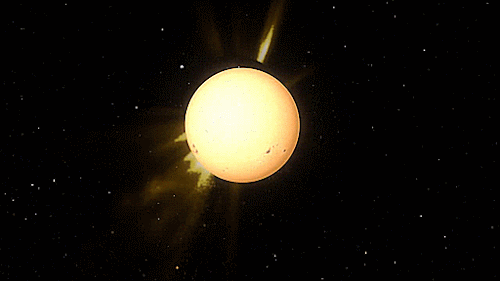


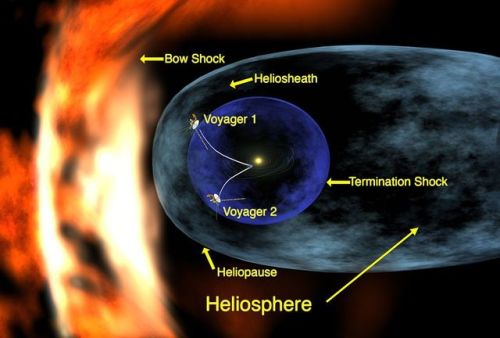
The heliosphere is the bubble-like region of space dominated by the Sun, which extends far beyond the orbit of Pluto. Plasma “blown” out from the Sun, known as the solar wind, creates and maintains this bubble against the outside pressure of the interstellar medium, the hydrogen and helium gas that permeates the Milky Way Galaxy. The solar wind flows outward from the Sun until encountering the termination shock, where motion slows abruptly. The Voyager spacecraft have explored the outer reaches of the heliosphere, passing through the shock and entering the heliosheath, a transitional region which is in turn bounded by the outermost edge of the heliosphere, called the heliopause. The shape of the heliosphere is controlled by the interstellar medium through which it is traveling, as well as the Sun and is not perfectly spherical. The limited data available and unexplored nature of these structures have resulted in many theories. The word “heliosphere” is said to have been coined by Alexander J. Dessler, who is credited with first use of the word in the scientific literature.
On September 12, 2013, NASA announced that Voyager 1 left the heliopause on August 25, 2012, when it measured a sudden increase in plasma density of about forty times. Because the heliopause marks one boundary between the Sun’s solar wind and the rest of the galaxy, a spacecraft such as Voyager 1 which has departed the heliosphere, can be said to have reached interstellar space. source










Here’s Why Black Holes Are Crullers, Not Donuts
“Just a few years ago, we didn’t even know whether it was a certainty that black holes had an event horizon, as we’d never observed one directly. In 2017, a series of observations were finally taken that could settle the issue. After a wait of two years, the first direct image of a black hole was released, and it showed us that the event horizon was, in fact, real as predicted, and that its properties agreed with Einstein’s predictions.
Now, another two years later, the polarization data has been added into the fold, and we can now reconstruct the magnetic properties of the plasma surrounding the black hole, along with how those features are imprinted onto the emitted photons. We still only have the one black hole that’s been directly imaged, but we can see how the light, the polarization, and the magnetic properties of the plasma surrounding the event horizon all change over time.”
You’ve seen the photo, but have you learned the science? Black holes are crullers, not donuts, and magnetized plasma is the reason why.
-
 thomasbrisenio liked this · 2 years ago
thomasbrisenio liked this · 2 years ago -
 porch-gremlin liked this · 4 years ago
porch-gremlin liked this · 4 years ago -
 hycaro-drace reblogged this · 5 years ago
hycaro-drace reblogged this · 5 years ago -
 hycaro-drace liked this · 5 years ago
hycaro-drace liked this · 5 years ago -
 eiuuei liked this · 5 years ago
eiuuei liked this · 5 years ago -
 goldsourcegold liked this · 6 years ago
goldsourcegold liked this · 6 years ago -
 terri104 reblogged this · 6 years ago
terri104 reblogged this · 6 years ago -
 terri104 liked this · 6 years ago
terri104 liked this · 6 years ago -
 050680oyvind liked this · 6 years ago
050680oyvind liked this · 6 years ago -
 shahemallawansah liked this · 6 years ago
shahemallawansah liked this · 6 years ago -
 nezdravo liked this · 6 years ago
nezdravo liked this · 6 years ago -
 scrambledmeggys liked this · 6 years ago
scrambledmeggys liked this · 6 years ago -
 idkniasarcasmbye reblogged this · 6 years ago
idkniasarcasmbye reblogged this · 6 years ago -
 loudsuitcasebatpasta-blog liked this · 6 years ago
loudsuitcasebatpasta-blog liked this · 6 years ago -
 scentedlampranchtree liked this · 6 years ago
scentedlampranchtree liked this · 6 years ago -
 ifeellikeglitter25 liked this · 6 years ago
ifeellikeglitter25 liked this · 6 years ago -
 nobeerreviews liked this · 6 years ago
nobeerreviews liked this · 6 years ago -
 miss-malaphor reblogged this · 6 years ago
miss-malaphor reblogged this · 6 years ago -
 nerdylandhumanoidfarm liked this · 6 years ago
nerdylandhumanoidfarm liked this · 6 years ago -
 i-need-jisoos-christ liked this · 6 years ago
i-need-jisoos-christ liked this · 6 years ago -
 pepdart liked this · 6 years ago
pepdart liked this · 6 years ago -
 cloudair liked this · 6 years ago
cloudair liked this · 6 years ago -
 nocti-x-blog liked this · 6 years ago
nocti-x-blog liked this · 6 years ago -
 saratfl liked this · 6 years ago
saratfl liked this · 6 years ago